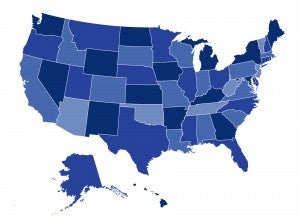
By Justin Giovannelli and Kevin Lucia
Last June, the Department of Labor (DOL) issued a groundbreaking regulation that made it easier for association health plans (AHPs) to offer coverage that is exempt from key provisions of the Affordable Care Act (ACA). AHPs have a “colorful and troubling history,” and the administration’s new, more lax approach to these plans has made it more likely that consumers will fall victim to health plan insolvencies and scams. The rule also reversed decades of DOL precedent for how to regulate AHPs and was quickly challenged on legal grounds. Late last month, a federal court in Washington, D.C., invalidated the rule’s major provisions, concluding that the regulation was a “clear[] . . . end-run around the ACA” and was inconsistent with federal law.
The court decision, which took immediate effect and hasn’t so far been appealed, removes the legal cover the administration had sought to extend to AHPs to circumvent the ACA. In a new work for The Commonwealth Fund, we identify the legal and regulatory steps the administration may take in response to the ruling and examine the implications of the decision for AHPs formed under the now-invalidated policy, their enrollees, and state regulators and policymakers. You can access our full analysis at The Commonwealth Fund.


1 Comment
I recently read your review of the State based reinsurance programs in Oregon, Alaska and Minnesota. Having spent the last 30 years as a broker/consultant and having managed corporate accounts as large as 22,000 employees, a specific and aggregate stop loss contract was always reviewed each year. An analysis of utilization and hard data would give us some insight as to where, and what level we would or would not purchase the reinsurance. Clearly, a group of 22,000 would not be buying coverage much below $250,000. I was amazed to see that in two of the State plans, coverage commenced at 50,000 and 90,000. Very expensive insurance. A few suggestions from an old salt that has negotiated many stop loss contracts over the years. First is the individual carriers, many of whom have withdrawn from the individual market, need to establish their own level of risk retention. The premium paid for a $100.000 stop loss is vastly more costly than a $500,000 stop The premiums paid by each carrier should vary based on their own analysis of risk retention. . Many times we would not purchase an individual stop, but purchase an aggregate at 125% of expect claims. In other words we didn’t care if an individual claims was catastrophic but bought sleep insurance that our liability would not exceed 25% beyond our projected claims. The federal gov, as much as I hate involving them, should be the back up provider and ultimate guarantor. . Similar to other high risk pools such as Fed flood insurance, FDIC for banking and Pension Guarantee,policies. I know this approach can stabilize the premiums without having to pass thru to the individual policy holder the excess claims that have to be paid. If you look at the structure of Loyd’s of London and the way the names take a piece of every risk on a
automatic basis, they never take the whole enchilada Roger A Peck.